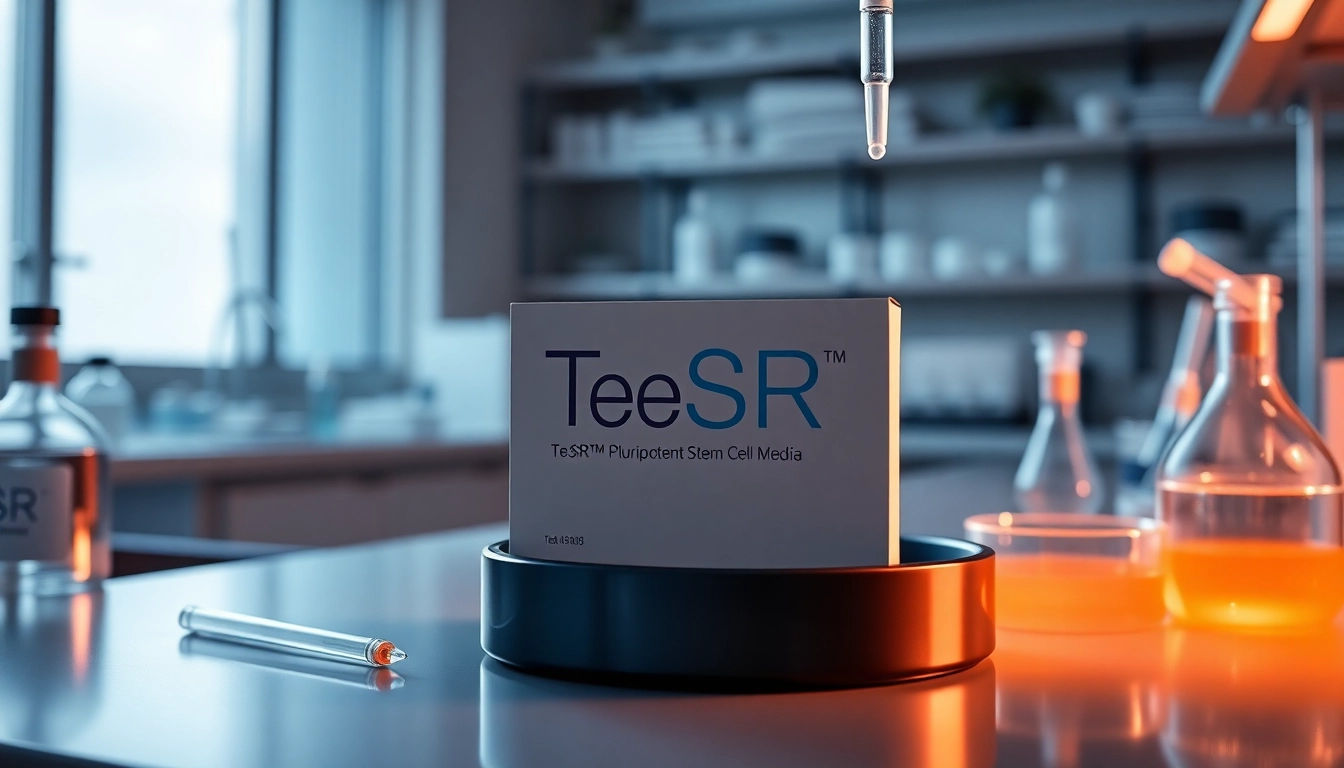Introduction to TeSR™ Media
In the realm of regenerative medicine and cellular therapy, pluripotent stem cells (PSCs) represent a frontier of immense potential. These unique cells can develop into any cell type in the body, creating invaluable opportunities for research, drug development, and therapeutic interventions. Central to harnessing this potential is the right culture media. All check in optimizing stem cell culture relies heavily on understanding and implementing effective media solutions. The TeSR™ line of feeder-free media addresses the critical need for reliable, reproducible, and versatile culture conditions for human embryonic stem cells (hESCs) and induced pluripotent stem cells (iPSCs).
What are Pluripotent Stem Cells?
Pluripotent stem cells are characterized by their ability to differentiate into three primary germ layers: ectoderm, mesoderm, and endoderm. This capacity makes them a powerful tool for exploring developmental processes and modeling diseases. PSCs can be sourced from embryos (hESCs) or reprogrammed somatic cells (iPSCs), both offering significant implications in biological research and therapeutic applications.
The Importance of Culture Media
The success of maintaining and differentiating PSCs heavily relies on the quality of the culture media utilized. The right media not only provides essential nutrients and growth factors but also creates a chemical environment conducive to maintaining pluripotency. Selecting optimal media is essential for promoting cellular health, reducing phenotypic variability, and supporting reproducible research outcomes.
Overview of TeSR™ Products
The TeSR™ product line, developed by STEMCELL Technologies, encompasses a variety of feeder-free media designed to support the entire lifecycle of pluripotent stem cells. This includes various formulations such as mTeSR™ Plus, TeSR™-E8™, and mFreSR™, which cater to different goals—maintenance, differentiation, and cryopreservation—ensuring researchers can seamlessly transition from reprogramming to applications involving cell therapies.
Understanding Feeder-Free Culture
Benefits of Feeder-Free Systems
Feeder-free culture systems offer a number of advantages over traditional feeder-based approaches. They eliminate the complex variables associated with feeder layers, such as their inconsistent composition and potential for contamination. Feeder-free conditions also facilitate better control over the cellular environment, enabling more standardized experiments across different laboratories. This reproducibility is essential in scientific research, particularly when studying fundamental biological processes or developing novel therapeutics.
Comparison with Traditional Methods
While traditional feeder-layer methods have been reliable in stem cell culture, they often lead to variability between batches, complicating experimental reproducibility. In contrast, feeder-free media such as mTeSR™1 and mTeSR™ Plus provide defined components, promoting a more uniform environment for stem cell growth and differentiation. Additionally, feeder-free systems have been shown to improve the recovery of stem cells during passaging, further supporting healthier growth dynamics.
Implementing Feeder-Free Cultures
The transition to feeder-free cultures requires careful consideration of several factors including medium choice, substrate coating, and cell passage techniques. Using TeSR™ media simplifies this process, as these formulations are pre-optimized to support hPSC behavior. This includes ideal nutrient concentrations and growth factors crucial for maintaining pluripotency. Researchers are encouraged to follow recommended protocols for passaging and media changes to ensure optimal cell health and growth rates.
Differentiation Media and its Applications
Components of mTeSR™ Plus
mTeSR™ Plus is a robust maintenance medium designed to simplify hPSC culture while enhancing cell quality. It includes several key components such as FGF2 in stabilized form, which enhances proliferation and supports longer intervals between media changes, thus reducing the burden of frequent interventions on the culture. Notably, this media maintains a balanced pH, which is crucial for optimal cell growth.
Applications in Tissue Engineering
The differentiation potential of PSCs presents exciting opportunities in tissue engineering. mTeSR™ Plus and other TeSR™ formulations allow for controlled differentiation into various cell types including cardiomyocytes, neuronal cells, and hematopoietic cells, offering solutions for creating functional tissue models. These processes are pivotal in drug screening, regenerative therapies, and personalized medicine strategies.
Case Studies on Differentiation Outcomes
Numerous studies have validated the effectiveness of TeSR™ media in achieving successful differentiation outcomes. For instance, using TeSR™-E5™, researchers have effectively directed hPSCs towards definitive endoderm differentiation, crucial for generating pancreatic or hepatic cells. Similarly, differentiation into cardiomyocytes using TeSR™-E6 has been documented to yield functional cells suitable for cardiac repair studies. These case studies exemplify the role of optimized media in facilitating cell-type-specific differentiation.
Quality Control in hPSC Culturing
Key Quality Metrics
Quality control is critical in stem cell research, as the integrity of hPSC cultures directly impacts experimental outcomes. Key quality metrics to monitor include cell morphology, growth rates, and the maintenance of pluripotency markers. Utilizing standardized media formulations aids in ensuring consistent and reliable results across experiments.
Ensuring Batch Consistency
Maintaining batch consistency is vital for reproducibility in stem cell research. The TeSR™ media family is formulated using rigorously pre-screened materials to guarantee high levels of consistency. Each production batch undergoes comprehensive testing to validate performance, thus assuring that researchers receive reliable products that meet specifications necessary for successful cell culture.
Strategies for Quality Assurance
Implementing robust quality assurance strategies, such as biobanking for future studies, regular performance checks, and environmental monitoring, can enhance cell culture reliability. Regular assessment of cytokine profiles and growth factor concentrations can also help in adjusting media formulations to align with the evolving needs of specific stem cell lines.
Future Trends in Stem Cell Research
Advancements in TeSR™ Media
The evolution of TeSR™ media reflects ongoing advancements in stem cell research and the growing understanding of cellular behavior. Innovations like the TeSR™-AOF and mFreSR™ are designed not only to improve basic research but also to promote clinical applications by ensuring safety and efficacy. Future products may integrate new technologies such as smart biomaterials or microfluidic devices that further automate or optimize the culture process.
Emerging Applications in Regenerative Medicine
As the promise of regenerative medicine continues to expand, the applications of TeSR™ media in creating functional tissues for transplantation and disease modeling become increasingly significant. The era of personalized medicine, wherein patients receive cell therapies tailored to their specific genetic profiles, hinges on reliable stem cell culture techniques, underscoring the critical nature of advancements in this field.
Challenges and Opportunities Ahead
Despite the progress made, challenges remain in ensuring the scalability and efficiency of stem cell production for therapeutic applications. The field must address issues such as bioengineering for higher yields, maintaining genomic stability during expansion, and navigating regulatory landscapes. However, these challenges also represent opportunities for innovation, particularly in the development of superior culture media and protocols that can better meet the needs of researchers and clinicians alike.



